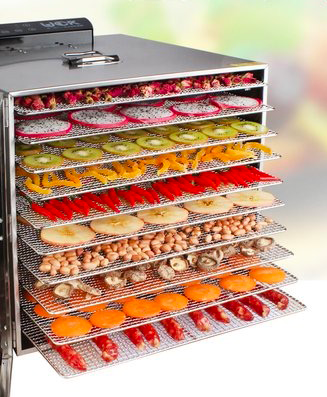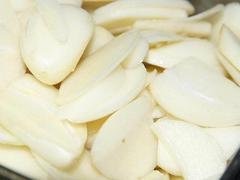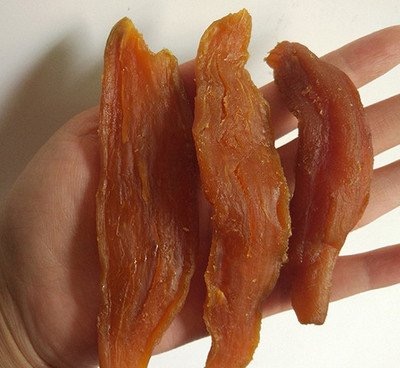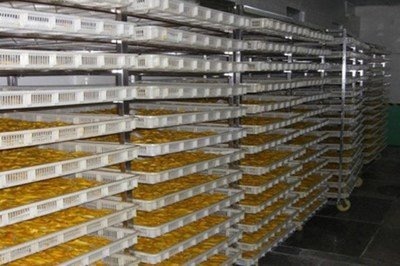
Content Menu
● Introduction
● Understanding Food Drying Machines
>> Heat Pump Dryers
>>> Advantages of Heat Pump Dryers
>> Condenser Dryers
>>> Advantages of Condenser Dryers
● Running Costs Comparison
>> Energy Consumption
>> Maintenance Costs
>> Water Usage
>> Overall Cost Analysis
>> Additional Operational Costs
● Environmental Impact
● Case Studies
>> Case Study 1: Fruit Processing Plant Using Heat Pump Dryers
>> Case Study 2: Vegetable Dehydration Facility Using Condenser Dryers
● Future Trends in Food Drying Technology
● Conclusion
● Related Questions
>> 1. What Is the Lifespan of a Heat Pump Dryer Compared to a Condenser Dryer?
>> 2. How Do I Choose Between a Heat Pump Dryer and a Condenser Dryer?
>> 3. Can I Use a Heat Pump Dryer for All Types of Food?
>> 4. What Are the Maintenance Requirements for Heat Pump Dryers?
>> 5. How Do Running Costs Affect My Business's Bottom Line?
Introduction
In the world of food processing, drying is a crucial step that preserves food quality and extends shelf life. As a leading manufacturer of food drying machines in China, we understand the importance of choosing the right drying technology. This article explores the running costs associated with heat pump dryers versus condenser dryers, providing insights for brands, wholesalers, and manufacturers in the food industry.

Understanding Food Drying Machines
Food drying machines are essential for removing moisture from various food products, including fruits, vegetables, and meats. The two most common types of dryers used in the industry are heat pump dryers and condenser dryers. Each type has its own operational principles, advantages, and running costs.
Heat Pump Dryers
Heat pump dryers utilize a refrigeration cycle to extract moisture from food products. They operate by drawing in ambient air, heating it, and then circulating it through the drying chamber. The moisture-laden air is then condensed back into water, while the heat is recycled to maintain efficiency.
Advantages of Heat Pump Dryers
- Energy Efficiency: Heat pump dryers are known for their low energy consumption. They can achieve significant energy savings compared to traditional drying methods.
- Gentle Drying: The low-temperature drying process helps preserve the nutritional value and flavor of the food.
- Versatility: These dryers can be used for a wide range of products, making them suitable for various applications in the food industry.
- Consistent Quality: Heat pump dryers provide uniform drying conditions, which helps maintain consistent product quality across batches.
- Reduced Environmental Impact: Their energy efficiency contributes to lower carbon emissions, making them a more environmentally friendly option.
Condenser Dryers
Condenser dryers operate by heating air and blowing it through the drying chamber. The moisture from the food evaporates into the air, which is then cooled down in a condenser unit to remove moisture before being reheated.
Advantages of Condenser Dryers
- Lower Initial Cost: Condenser dryers typically have a lower purchase price than heat pump dryers.
- Simplicity: They are generally easier to operate and maintain due to their straightforward design.
- Faster Drying Times: In some cases, condenser dryers can achieve quicker drying times compared to heat pump models due to higher operating temperatures.
Running Costs Comparison
When evaluating heat pump vs condenser dryer running costs, several factors come into play:
Energy Consumption
Heat pump dryers consume significantly less energy than condenser dryers. Their ability to recycle heat means they use less electricity for heating purposes.
- Heat Pump Dryer: Average energy consumption is around 1.5 kWh per cycle.
- Condenser Dryer: Average energy consumption can reach up to 3 kWh per cycle.
This difference translates into lower electricity bills for businesses using heat pump technology.
Maintenance Costs
Maintenance is another critical factor impacting running costs.
- Heat Pump Dryers: Require periodic maintenance but have fewer mechanical issues due to their closed-loop system.
- Condenser Dryers: May require more frequent maintenance due to their reliance on heating elements and fans. Regular cleaning of filters and components is necessary to ensure optimal performance.
Water Usage
Heat pump dryers condense moisture back into water, which can be collected and reused or drained away. This feature can reduce water costs for businesses that need to manage water usage carefully. In contrast, condenser dryers typically expel moisture into the atmosphere or require drainage systems that may incur additional costs.

Overall Cost Analysis
To illustrate the cost differences more clearly, consider a scenario where both types of dryers are used continuously over a month:
- Heat Pump Dryer:
- Energy Cost: $0.12 per kWh
- Monthly Energy Consumption: 1.5 kWh x 30 days = 45 kWh
- Monthly Energy Cost: 45 kWh x $0.12 = $5.40
- Condenser Dryer:
- Monthly Energy Consumption: 3 kWh x 30 days = 90 kWh
- Monthly Energy Cost: 90 kWh x $0.12 = $10.80
In this example, using a heat pump dryer could save approximately $5.40 monthly on energy costs alone.
Additional Operational Costs
Beyond energy consumption and maintenance, businesses should also consider other operational costs associated with each dryer type:
- Labor Costs: Heat pump dryers often require less monitoring during operation due to their automated features, potentially reducing labor costs associated with operating machinery.
- Space Requirements: Heat pump dryers may have different space requirements compared to condenser models due to their design and airflow needs. Businesses should evaluate their facility layout when choosing a dryer type.
Environmental Impact
Both types of dryers have environmental implications worth considering:
- Heat Pump Dryers: Their energy efficiency contributes to lower carbon emissions. Additionally, they often use environmentally friendly refrigerants that have less impact on global warming potential.
- Condenser Dryers: Higher energy consumption may lead to greater environmental impact over time. Furthermore, if they rely on fossil fuels for electricity generation, their overall carbon footprint may be higher than that of heat pump dryers.
Case Studies
To further illustrate the benefits of each dryer type, let's look at some real-world examples:
Case Study 1: Fruit Processing Plant Using Heat Pump Dryers
A fruit processing plant switched from traditional drying methods to heat pump technology. They reported a reduction in energy costs by over 30% within six months of operation. The plant also noted improved product quality with enhanced flavor retention and reduced shrinkage during drying.
Case Study 2: Vegetable Dehydration Facility Using Condenser Dryers
A vegetable dehydration facility opted for condenser dryers due to their lower initial investment costs. However, they faced higher ongoing energy bills and maintenance issues related to clogged filters and heating elements. After two years, they began exploring options for upgrading to heat pump technology as they recognized the long-term savings potential.
Future Trends in Food Drying Technology
As technology continues to advance, both heat pump and condenser dryer designs are evolving:
- Smart Technology Integration: Modern dryers are increasingly equipped with IoT capabilities that allow for remote monitoring and control. This feature enhances operational efficiency by enabling real-time adjustments based on environmental conditions.
- Energy Recovery Systems: Newer models are incorporating systems that recover waste heat from the drying process for reuse in other operations within food processing plants.
- Sustainability Initiatives: As sustainability becomes a priority across industries, manufacturers are focusing on creating more eco-friendly drying solutions that minimize waste and reduce energy consumption.
Conclusion
When comparing heat pump vs condenser dryer running costs, heat pump dryers emerge as the more cost-effective option in terms of energy consumption and long-term savings. Their efficiency not only reduces operational costs but also supports environmentally friendly practices in food processing.
For businesses looking to invest in food drying technology, understanding these differences is crucial for making informed decisions that align with both financial goals and sustainability efforts.

Related Questions
1. What Is the Lifespan of a Heat Pump Dryer Compared to a Condenser Dryer?
Heat pump dryers typically have a longer lifespan due to their efficient design and fewer mechanical components compared to condenser dryers.
2. How Do I Choose Between a Heat Pump Dryer and a Condenser Dryer?
Consider factors such as initial investment cost, energy efficiency, maintenance requirements, and specific drying needs when making your choice.
3. Can I Use a Heat Pump Dryer for All Types of Food?
Yes, heat pump dryers are versatile and can effectively dry various food types including fruits, vegetables, and meats.
4. What Are the Maintenance Requirements for Heat Pump Dryers?
Regular cleaning of filters and occasional checks on refrigerant levels are essential for maintaining optimal performance.
5. How Do Running Costs Affect My Business's Bottom Line?
Lower running costs from energy-efficient machines can significantly improve profit margins by reducing overhead expenses related to production processes.
By considering all these aspects—energy efficiency, maintenance needs, initial investment costs—businesses can make informed decisions about which type of dryer best suits their operational requirements while maximizing profitability in food processing operations.












